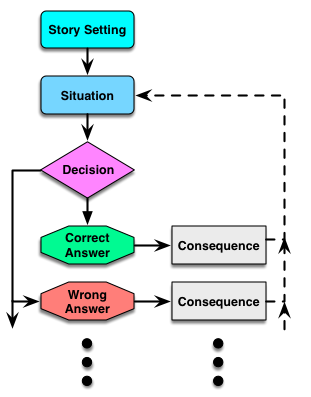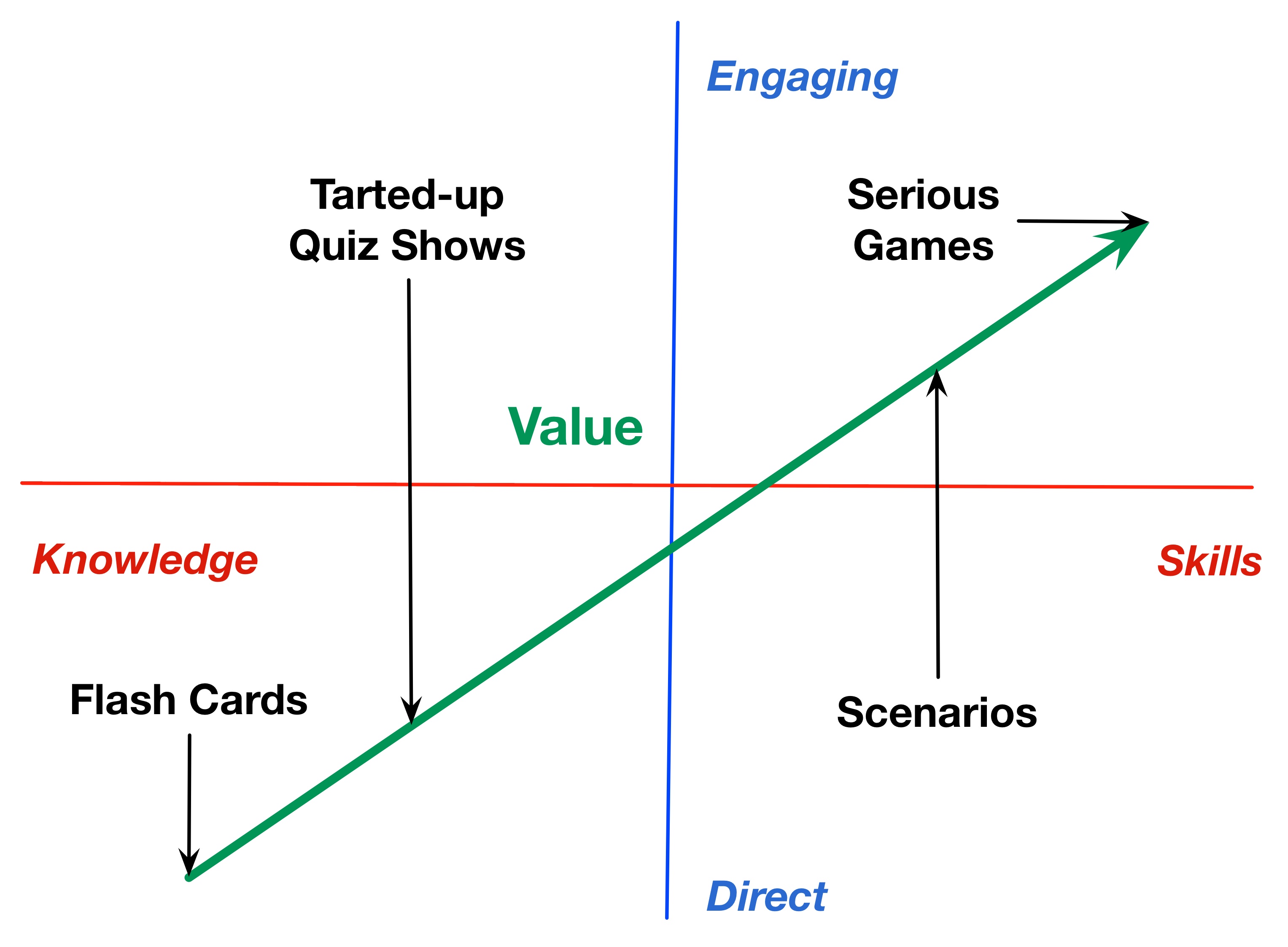I volunteer for our local Community Emergency Response Team (CERT; and have learned lots of worthwhile things). On a call, our local organizer mentioned that she was leading a section of the train-the-trainers upcoming event, and was dreading trying to make it interesting. Of course I opened my big yap and said that’s something I’m focusing on, and offered to help. She took me up on it, and it was a nice case study in making it meaningful.
Now, I have a claim that you can’t give me a topic that I can’t create a game for. I’m now modifying that to ‘you can’t give me a topic I can’t make meaningful’. She’d mentioned her topic was emergency preparedness, and while she thought it was a dull topic, I was convinced we could do it. I mentioned that the key was making it visceral.
I had personal experience; last summer our neighbor was spreading the rumor that we were going to have to evacuate owing to a fire over the ridge. (Turns out, my neighbor was wrong.) I started running around gathering sleeping bags, coats, dog crate, etc. Clearly, I was thinking about shelter. When I texted m’lady, she asked about passports, birth certificates, etc. Doh!
However, even without that personal example, there’s a clear hook. When I mentioned that, she mentioned that when you’re in a panic, your brain shuts down some and it’s really critical to be prepared. However, she mentioned that someone else was taking that bit, and her real topic was different types of disasters. Yet my example had already got her thinking, and she started talking about different people being familiar with an earthquake (here in California).
I thought of how when talking with scattered colleagues, they disclaim about how earthquakes are scary, and I remind them that every place has its hazards. In the midwest it could be tornados or floods. On the east coast it’s hurricanes. Etc. The point being that everyone has some experience. Tapping into that, talking about consequences, is a great hook.
That’s the point, really. To get people willing to invest in learning, you have to help people see that they do need it. (Also, that they don’t know it now, and that this experience will change that.). You need to be engaged in making it meaningful!
Again, in my mind learning experience design (LXD) is about the elegant integration of learning science with engagement. You need to understand both. I’ve got a book and a workshop on learning science, and I’ve a workshop at DevLearn on the engagement side. I’ve also got a forthcoming book and an online workshop coming for more on engagement. Stay tuned!

